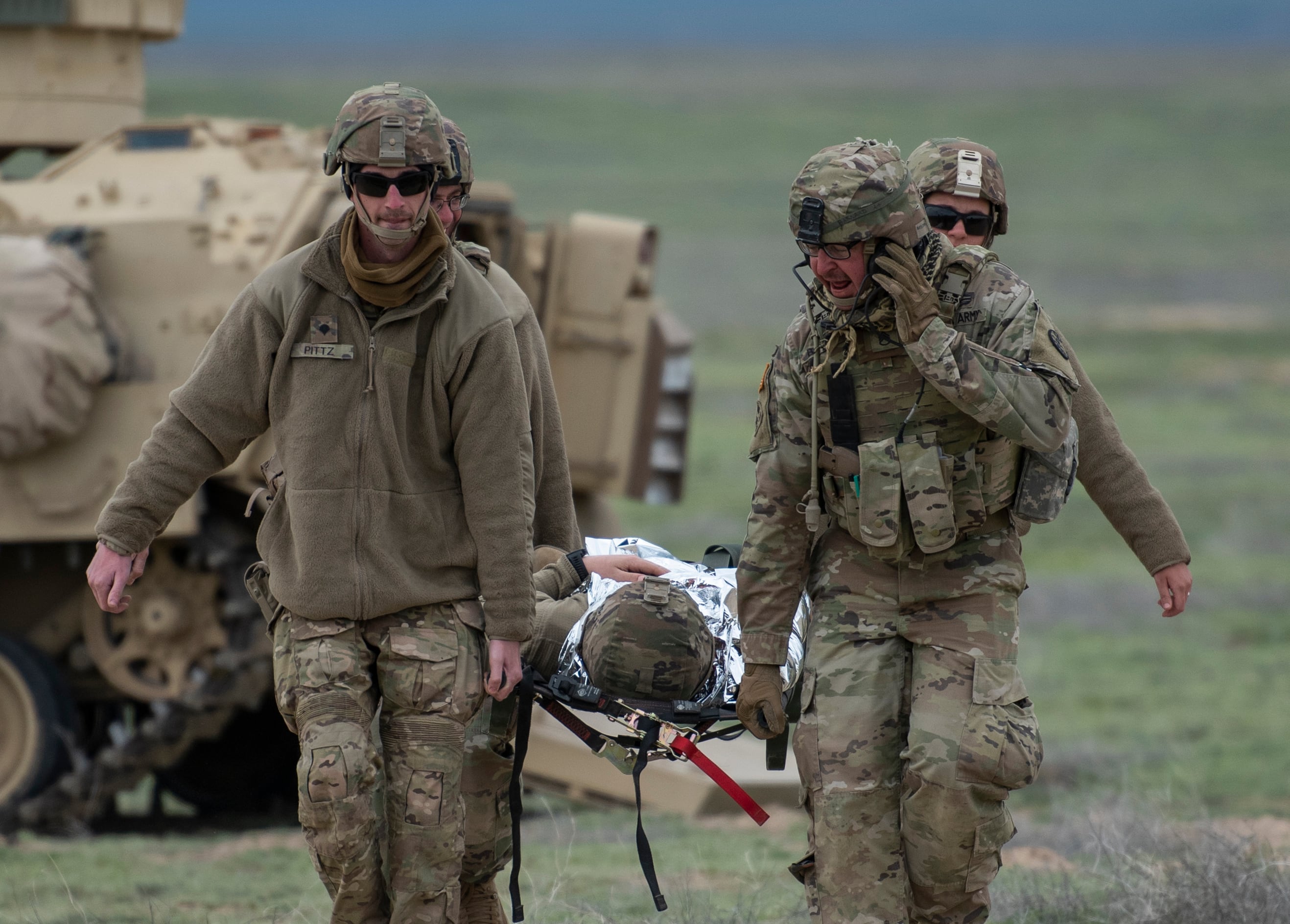The next “shock and awe” campaign may never drop a single bomb.
It’s been 20 years since black-and-green footage of Baghdad under attack flashed across television screens worldwide, broadcasting the explosive U.S.-led push to unseat Saddam Hussein and dismantle the Iraqi civil and military service.
The overwhelming show of strength represented the largest international military effort since World War II and the biggest U.S. operation since the Vietnam War. The air campaign relied on 1,800 aircraft — half of which belonged to the U.S. Air Force — and fired more than 500 cruise missiles in its first day. Airmen gained control of Iraqi airspace less than three weeks later, with limited American losses.
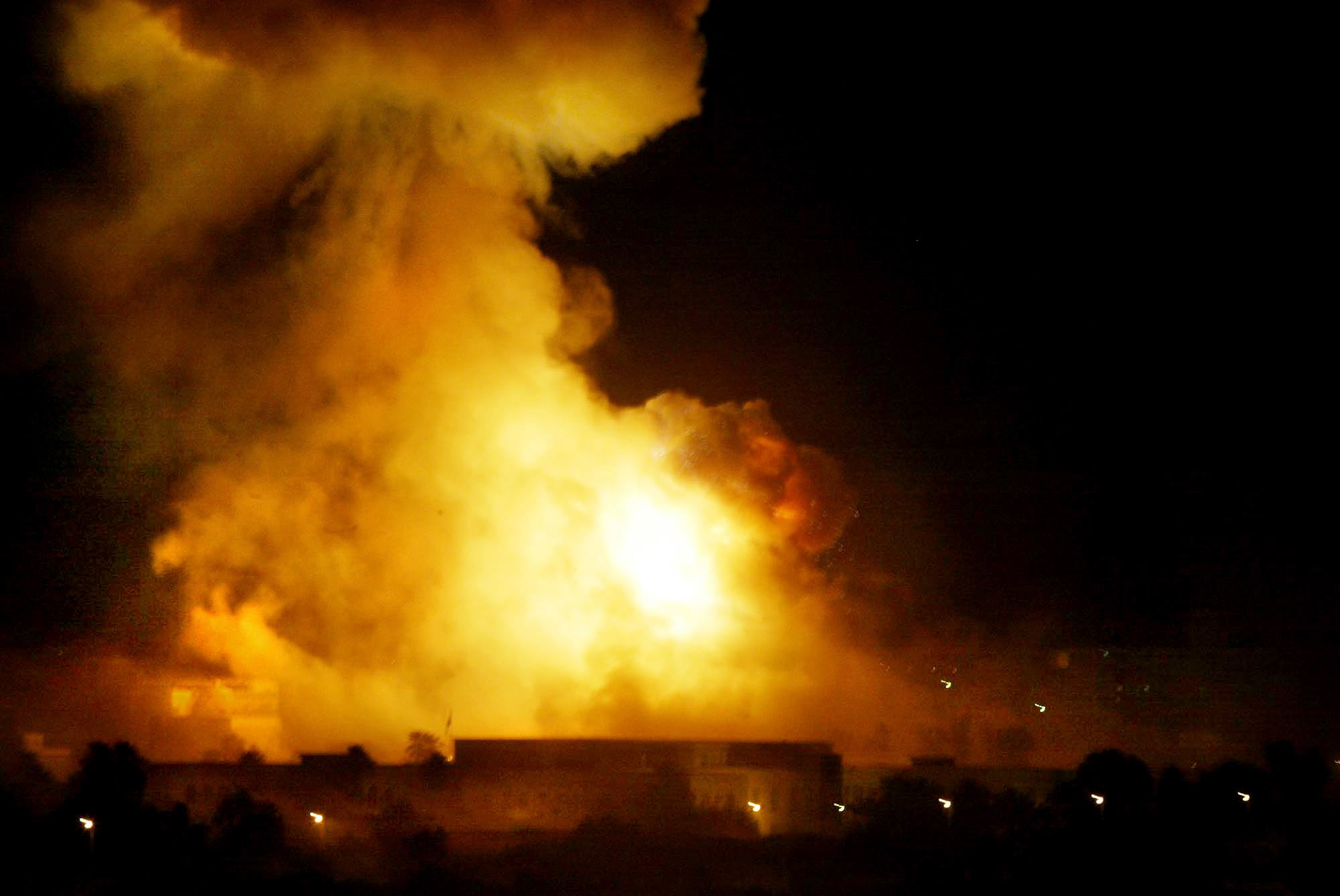
But could the United States do it again? Like most questions of military strategy: It depends.
Fighter technology has advanced; bombers have not. Their logistics chain has rusted as planes grow older and it becomes harder to supply spare parts. Cyber and drone warfare would be a cornerstone of any offensive, even as U.S. forces would face many of the same threats from an adversary. Battlefield tactics are increasingly complex and attuned to the digital age.
“It’s got a big asterisk,” said retired Air Force Gen. T. Michael “Buzz” Moseley, who led the air campaign in Iraq before becoming the service’s chief of staff in 2005. “Philosophically, can you do it? Yeah. Are you prepared to do it? Yeah. Are you trained to do it? Yeah. But do you have the assets to do it and sustain it?”
What that may look like largely depends on the precipitating event, and where the invasion happens, current and former Air Force officials and defense experts told Air Force Times. Is there an advanced military on the other end? Was the groundwork laid ahead of time for a smoother takeover? How far would American jets and their weapons need to travel?
And, they said, what’s the long game?
“There’s a bunch of things the United States could do to quickly blind [an adversary],” said Peter Bergen, a vice president at the Washington-based New America think tank and co-director at Arizona State University’s Center on the Future of War. “Regime change is something that we seem to be able to do very quickly. … The question is, what comes next?”
From Iran to North Korea, any air campaign must make sense with the political and military objectives it hopes to achieve, Air Forces Central commander Lt. Gen. Alexus Grynkewich said.
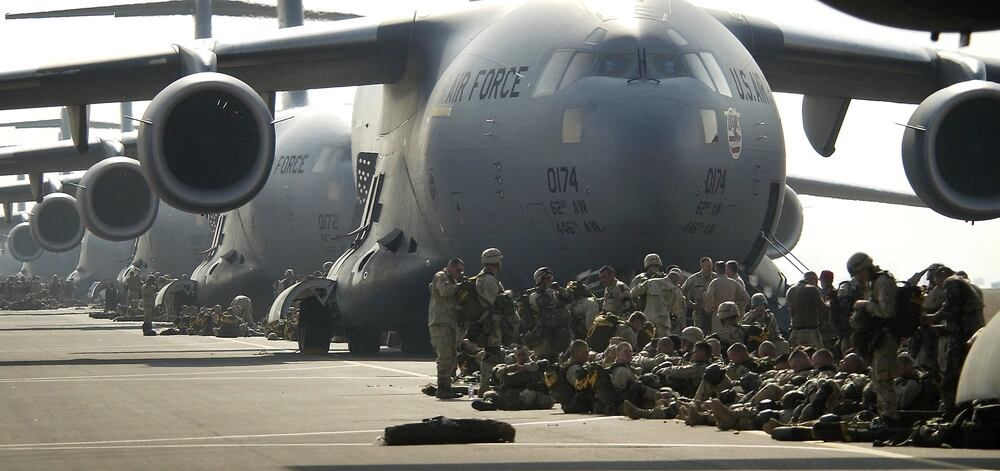
In the precision-attack era, backed by savvier cyber operations, that may not require weeks or even months of nonstop bombing.
“When I have seen the term ‘shock and awe’ used, and people say that ‘shock and awe’ failed, I often find that what we’re really talking about is, ‘We tried to do something cheap and easy at the beginning with a limited amount of military force,’ rather than thinking about how we could apply pressure and lethal effects across the entire enemy system at once,” Grynkewich said.
Harlan Ullman, the military consultant credited with coining the term “shock and awe,” believes a true shock and awe campaign would rely much more on psychological warfare and diplomacy to keep adversaries in check and shape conditions in America’s favor. Those operations have dwindled in the decades since the Vietnam War as the Pentagon prioritized a more traditional approach to combat.
“Let them know from the beginning: They’re not going to survive the war. … We’re going to turn them into the Stone Age” without putting a single plane in enemy airspace, said Ullman, a senior adviser at the Atlantic Council.
‘Not a meat ax’
If the U.S. were to go to war first with its electronic attack planes and a strong disinformation campaign, followed by cyberattacks and standoff weapons, Ullman said it could prove more effective and efficient than dispatching legions of hardware and troops.
For instance: Shock and awe in the Pacific could look like a defense force capable of preventing China’s military from reaching Taiwan, without striking first, he said. If that force also threatens to cut off China’s access to air and sea shipping, Beijing could capitulate.
“We need to be able to use a scalpel and not a meat ax,” Ullman said. “We don’t, because our default position, ultimately, is always military force.”
What people tend to envision as shock and awe, though, comes after containment fails. Then it’s a race against the clock — and enemy forces — to gain control of enemy airspace.

“You’re going to have to figure out a way to campaign plan the usage of the existing F-22s and F-35s, and at some point you’re going to end up having to use F-16s and F-15Es and perhaps A-10s,” Moseley said. “But not on day one, not on day two. You’re going to have to damage that [integrated air defense] and damage that opposing force.”
Today’s surface-to-air missiles are much more lethal than those wielded by the Iraqis. They’re also harder — but possible — to take down, he said.
“There’s a million ways to go after an integrated air defense system,” such as the Russian-built S-300 or S-400 surface-to-air missiles teamed with other radars, anti-aircraft artillery and command nodes, Moseley said: Confuse them, or the people running them. Attack them kinetically or non-kinetically. Stress them. Target their command and control. Jam them.
That could require a more sophisticated approach than the bombing runs against surface-to-air missiles and anti-aircraft artillery in Iraq.
Current Air Force officials envision a network of drones that would act as decoys and add frontline firepower without putting Americans in harm’s way. Those would be paired with more advanced electronic attack tools, long-range munitions and stealthy aircraft than existed in 2003, plus a more diverse array of intelligence-collection and communications nodes to maintain situational awareness.
“If we try to do shock and awe in a traditional sense of, ‘Oh, we’ll bomb a bunch of stuff and then wait,’ that sounds a little bit too ‘Rolling Thunder’ and not quite enough ‘Linebacker II’ to me,” Grynkewich said.
Operation Rolling Thunder was the three-year U.S. bombing campaign that tried to halt North Vietnam’s takeover of South Vietnam from 1965 to 1968; Operation Linebacker II came in 1972 to bring Hanoi to the table for peace talks.
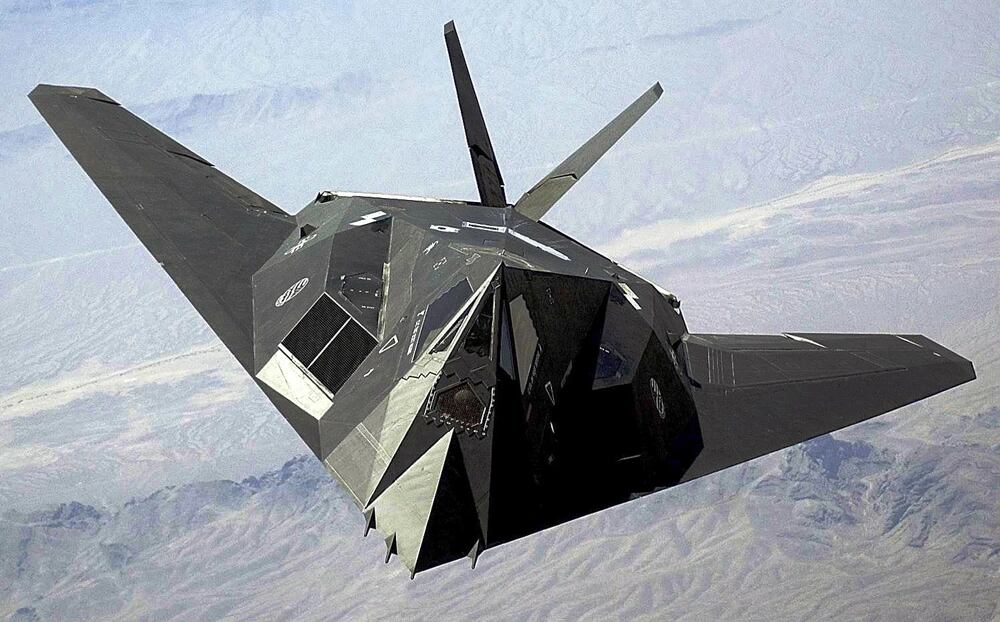
Tactics that emerged in 2003 have continued to evolve as well, from the B-2 Spirit bomber’s combat debut to the first use of EC-130H Compass Call electronic attack planes for psychological warfare.
Airmen think more comprehensively about those options now, and are better at seeing a variety of solutions to a problem than they were 20 years ago, Grynkewich said.
Considering the full spectrum of military options has grown more important as America’s air arsenal ages. The average fighter jet is nearly 30 years old; the oldest tankers first deployed in the 1950s.
Its workforce is shrinking, too: The active duty Air Force now has about 51,000 fewer troops than it did in 2003; the Air National Guard and Air Force Reserve have around 33,000 fewer troops in total.
Some experts worry those trends would weaken any U.S. attempt to gain control of enemy airspace and pummel them into submission.
“I believe we can do it. It’s just going to be harder because of the nature of the equipment that we’re forced to use,” Moseley said.
The Air Force’s stealthy F-117 Nighthawk fighter jets used during Operation Iraqi Freedom were replaced by the fifth-generation F-22 Raptor and F-35 Lightning II fighter jets after 2003. No new bombers have come online since OIF; the Air Force’s cargo, surveillance and refueling fleets are largely the same.
Future platforms like the B-21 Raider stealth bomber, E-7 Wedgetail aerial target tracking plane and a sixth-generation fighter remain years away. And going to war with older aircraft complicates maintenance and supply chain needs.
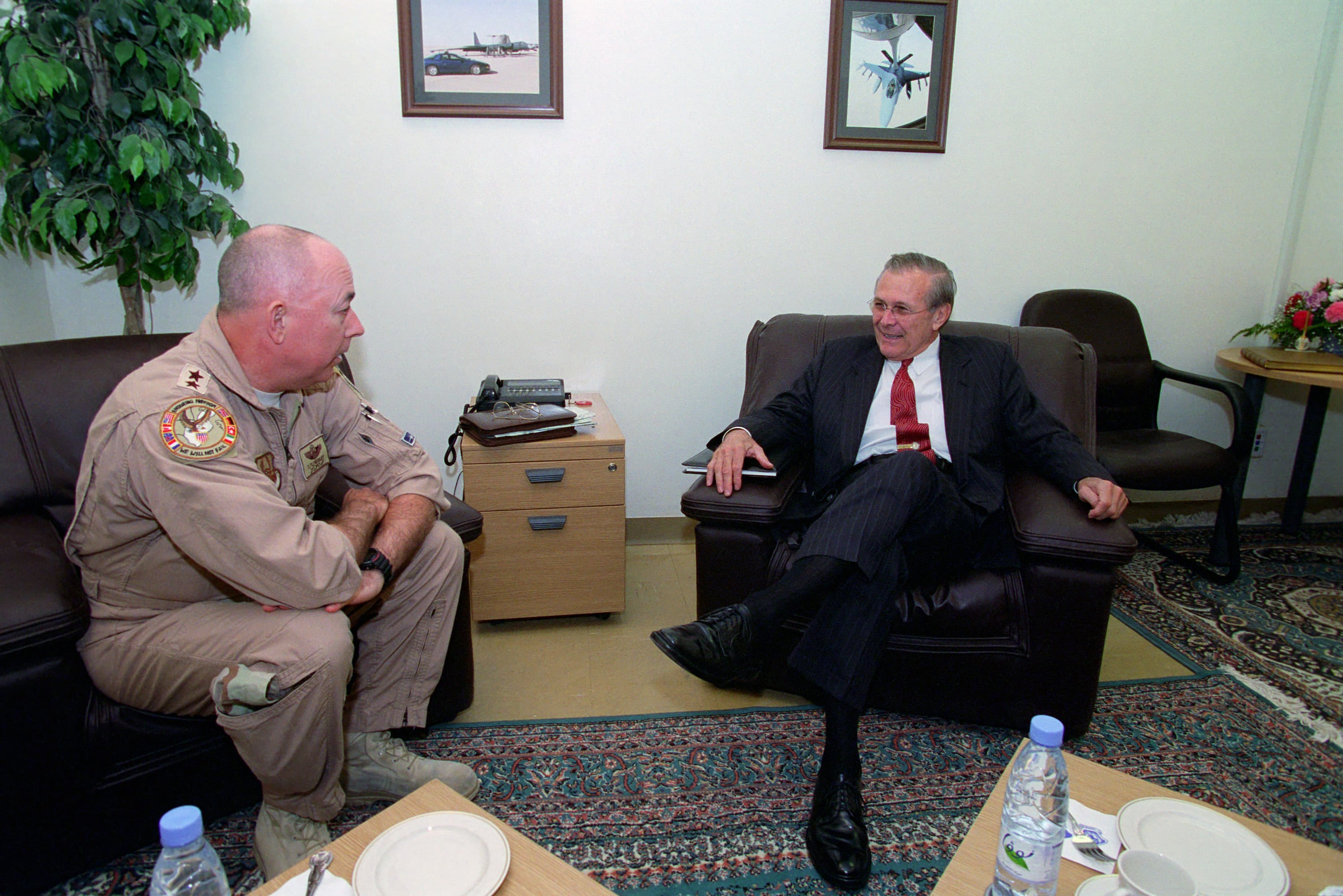
Moseley argues that, in lieu of a newly designed fighter, the Air Force needs more of the non-stealth F-22s in order to control enemy airspace. It would need a bomber fleet that can sustain airstrikes over longer periods of time. And it needs more KC-46 Pegasus tankers, now.
“The thing I worried about the most, the single-point failure for the entire campaign, to include air and ground campaign, was the tanker,” he said. “Do we have a new tanker in sufficient numbers, so that’s not a problem? … We don’t.”
Another potentially major point of failure: what Moseley believes is the U.S. military’s overdependence on satellite communications.
“If we can’t command and control forces, we don’t go blow stuff up,” he said. “Given the capabilities that we have seen with malware, cyber, [kinetic and non-kinetic attacks, and anti-satellite weapons], are we absolutely confident … that our command and control systems are intact and resilient? I suggest we’re not.”
The invasion of Iraq marked the first time the head of American airpower in the Middle East was put in charge of space operations. Now that’s the Space Force’s job.
Its new unit, U.S. Space Forces-Central, plans how to wield and protect space-related assets as part of an overall mission. That can help GPS, missile warning systems and other satellites and radars stay reliable when needed, and explore new ways to integrate them into offense and defense.
That expertise can come in handy especially as small drones continue to grow as a centerpiece of modern warfare. Those systems are also crucial to protecting overseas U.S. and coalition infrastructure that could be pelted with rockets or drones in retaliation.
One thing experts hope gets left in the early 2000s: the phrase “shock and awe” itself.
It’s too flippant for an act of war, misunderstood in its intent, carrying too much baggage 20 years later, they said.
“Frankly, I don’t care if they’re awed, I just care if they’re shocked,” Grynkewich said. “I care if I get the military outcomes that I’m looking at, from the perspective of having their … decision-making apparatus seize up, having their sustainment fall apart, and having them freeze in their place.”
Rachel Cohen is the editor of Air Force Times. She joined the publication as its senior reporter in March 2021. Her work has appeared in the Washington Post, the Frederick News-Post (Md.), Air and Space Forces Magazine, Inside Defense, Inside Health Policy and elsewhere.


